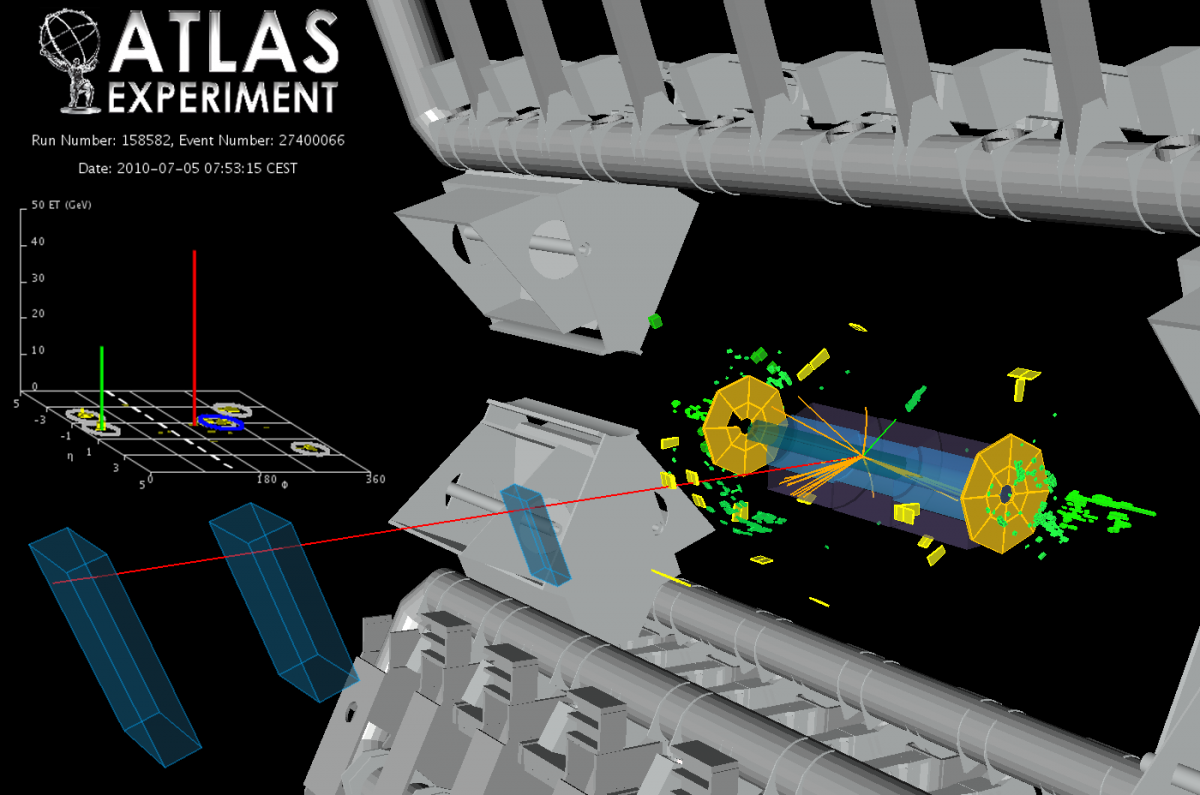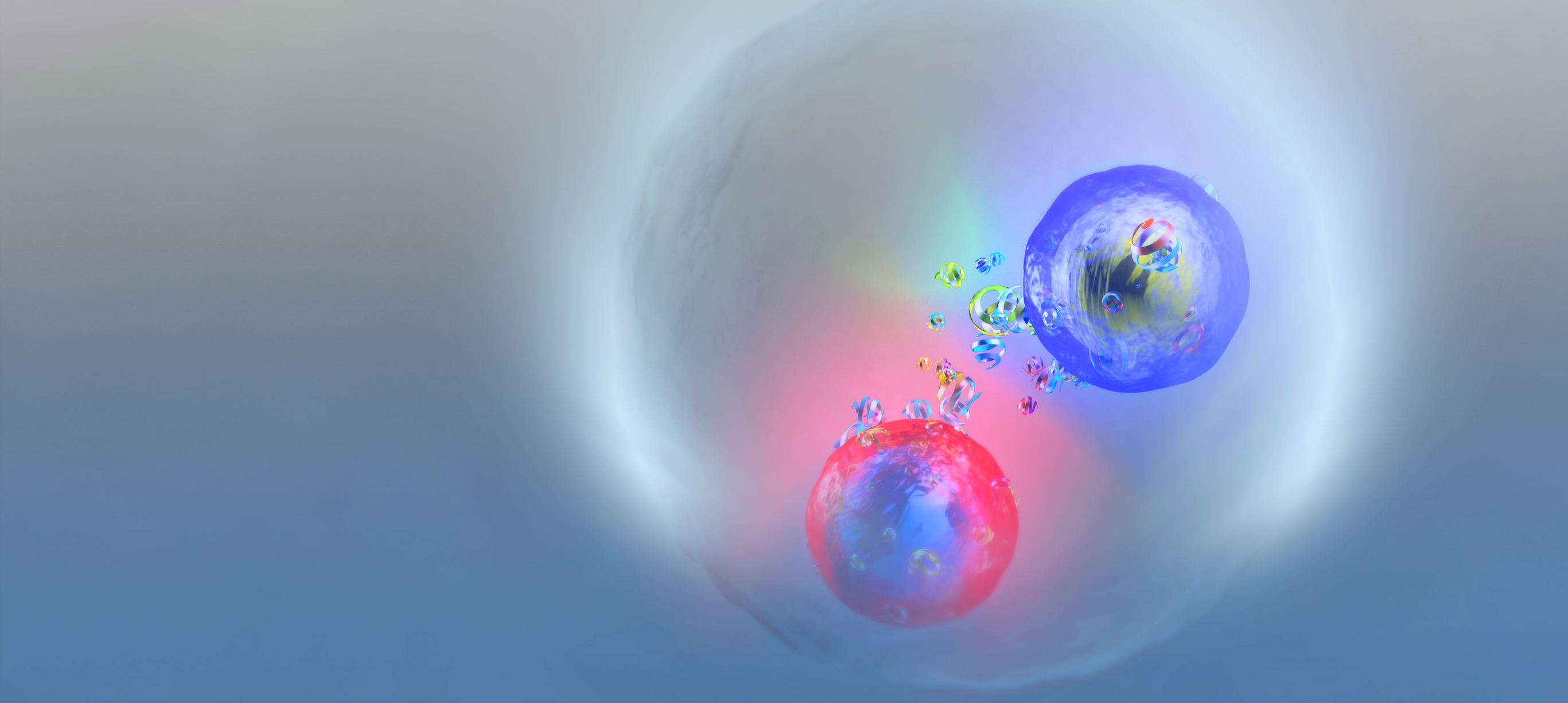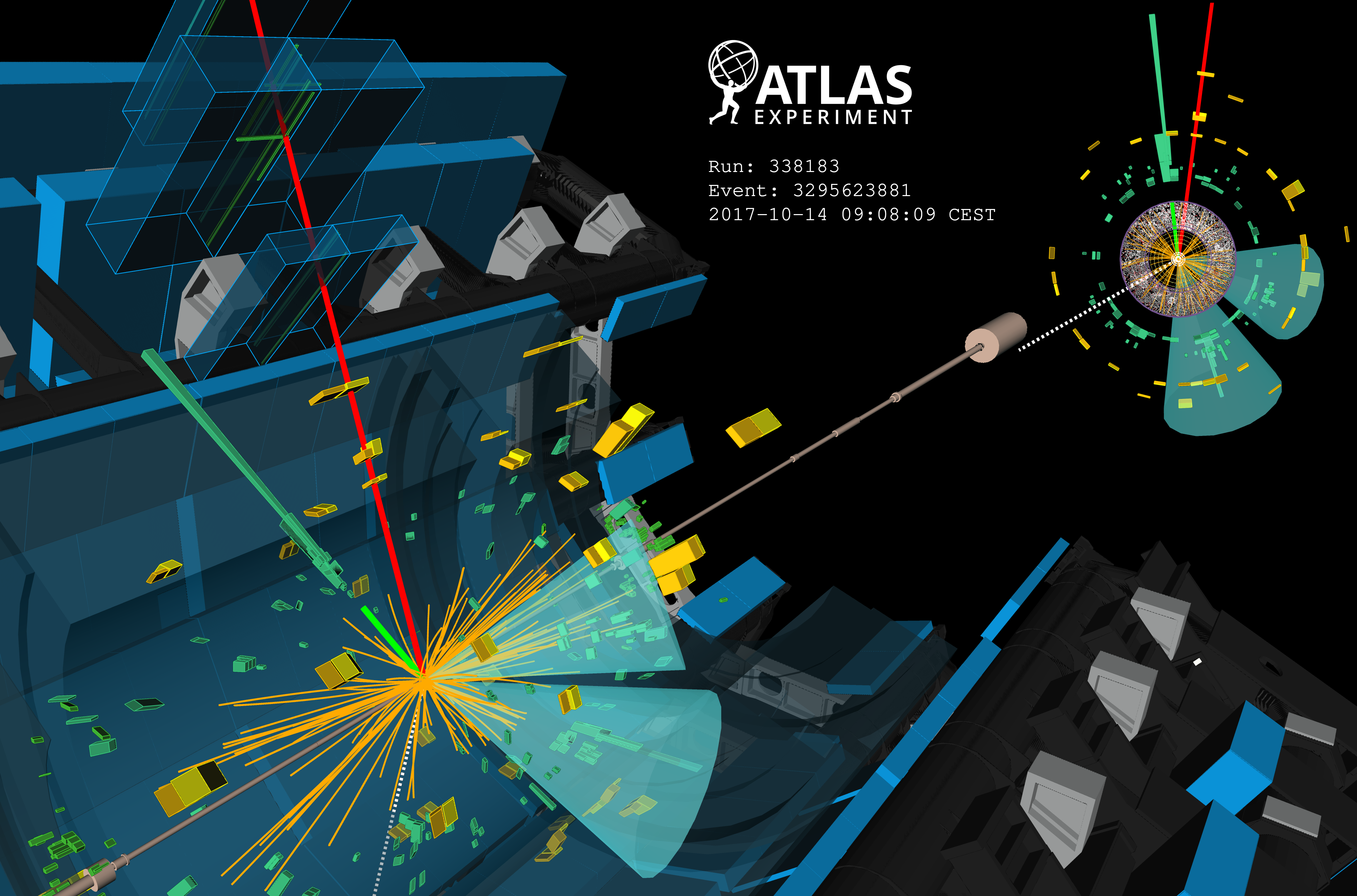ATLAS starting to get on Top of things
26 July 2010 | By
ATLAS is about to check one more particle off of its Standard Model (SM) checklist. Namely the top quark. This famous quark is perhaps one of the most complex of the SM particles. Unlike other quarks the top will decay before it hadronizes into a jet (giving a single shower of particles). The top is too heavy to bother with that. Instead it will decay to the next heaviest quark (appropriately called the bottom quark) and a W boson. The W will then decay to two other quarks, or to a charged lepton and a neutrino. The bottom quark will then hadronize into a jet, but with the distinct displaced vertex (a convergence of tracks to a point that is not coincident with the actual collision point). The top quark mass is about 173 GeV, while a proton is just under 1 GeV. This little (but heavy) guy is so complex and interesting that entire armies of physicists are dedicated to looking at this one particle. It is so young, and so complicated that there is still much to learn from it. Top, which was discovered at the Fermilab Tevatron in 1995, is the latest of the non-neutrino-like particles of the SM to be discovered. (The tau neutrino was discovered in 2000 at Fermilab by the DONUT collaboration and is the last particle of the SM to be discovered, save the Higgs.) The top quark is usually produced in pairs (a top anti-top pair) but sometimes only one top quark is produced (this is referred to as single top production). Either way, the top quark has the smallest production cross-section of all of the SM particles. The next particle to be found (as we progress in our investigation of smaller and smaller cross-sections) is going to be a new particle. Could it be the Higgs? Perhaps a SUSY particle? Or even something never before dreamed of!

On July 23, 2010 the ATLAS collaboration showed its first top quark candidate events to the public at the ICHEP 2010 Conference. Now a particle of this sophistication cannot be "discovered" in just one event (or even nine, as the ATLAS Collaboration have found). It took 17 of these distinct events for one of the Tevatron detectors to claim discovery. Those 17 events took about 50 pb^-1 of data, which took nearly 2 years to collect and analyze. So ATLAS isn't going to do anything presumptuous and say it has found the top quark in its data, yet. ATLAS will however demonstrate to the world that it is seeing very encouraging signs!




